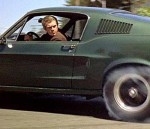
December 13, 2014
It’s December! That means it’s time again to enter the world of JRR Tolkien as brought to the screen by director Peter Jackson, with all its creatures, magic and the fur-covered feet of an old friend. I speak of course of The Hobbit’s second installment, The Desolation of Smaug, and its reluctant hero Bilbo Baggins.
Jackson was determined to show TDOS, like the first film, An Unexpected Journey, with the innovative 48-frames-per-second, although its use has been roundly criticized. He has also graced the film with the ever-evolving special-effects wizardry of the WETA Workshop.
It is a rather fearless choice on the part of the director and his crew to stick with and continue to expand on these developments in film. With the option of seeing it in the traditional way, at 24 fps, or the higher frame rate, in 2D, or in 3D, fans of the franchise have a plethora of choices.
Still the question is, does The Desolation of Smaug deliver excitement and grandeur, move characters forward, keeping its audience connected, making the split into three movies worthwhile?
Cinema Siren says yes. The film is nothing short of a visual stunner, making what might amount to the longest advert in history for New Zealand tourism board. It also might spur on a new fashion in architecture; Hobbit home design. As far as the action and story lines are concerned, there are two action scenes so engrossing they alone would make the trip to a cineplex time well spent.
Cinema Siren recommends this film enthusiastically, but with strong caveats… The high frame rate may continue to prove a distraction for most non-gamers, and viewers need to know what’s going on before going in, or a world of confusion awaits.
The first suggestion is to see the first movie shortly before seeing this new installment. That will help. The second is to pay heed to and ingest well this brief explanation of the mythology and recent history of middle earth…as well as watch my video of interviews with the actors. They speak for themselves.
It starts with the first film, where Bilbo Baggins (Martin Freeman) has been asked by the wizard Gandalf (Ian McKellen, deservedly a Sir) and accepted to be part of a dangerous quest to reclaim the dwarf kingdom, Erebor, inside The Lonely Mountain. He will be helping the leader, dwarf prince Thorin Oakenshield (Richard Armitage) and his 12 dwarf friends, and Gandalf will accompany them.
Off they go. They encounter goblins and Orcs, (hairless and very strong creeps that do the bidding of higher villains like the evil wizard Sauron) and on their way, go to the elfish stronghold of Rivendell.
Here is a good time to mention that dwarf prince Thorin doesn’t dig on elves. High elf and king Thrandui (Lee Pace) , Legolas’s (Orlando Bloom) father, looked on as his dwarf race was decimated and family was killed in battle, and he hasn’t forgiven the lot of them.
Anyway, high elf Lord Elrond (Hugo Weaving) tells them of a secret door that will get them into The Lonely Mountain, but the door is only visible on Durin’s Day. Adventures ensue wherein Bilbo has a great interaction with Gollum and winds up with the ring, which allows him to become invisible, but also has an ink-dark goodness-sucking power. The first film ends as they see The Lonely Mountain.
In this second film, the company continues into the forest of Mirkwood. Gandalf has to go off somewhere to take care of something. We see little of him from there, but it’s clear whatever he’s up to will play heavily in the third film.
They encounter giant spiders (those with arachnophobia, this is your one and only warning) and are captured by wood elves, overseen by aforementioned King Thranduil: Think a more laconic and blonde Loki with fewer Daddy issues and less desire to destroy. His son Legolas and new cinematic invention, ass-kicking common elf Tauriel (Evangeline Lilly), aid the dwarves and play a part in the proceedings, as does a mysterious human named Bard (Luke Evans) in Lonely Mountain adjacent and legitimately dragon-fearing Lake-town. Dragon doings ensue.
The most impressive scenes are when Legolas and Tauriel are fighting Orcs while the company is careening down a river in barrels, and the tense, exciting meeting of Bilbo and Smaug the dragon (Benedict Cumberbatch). Cumberbatch informed his characterization through motion-capture movements that the filmmakers used to develop the dragon’s physical quirks and facial expressions.
To see Freeman and Cumberbatch as Bilbo and Smaug, knowing they are also the beloved Watson and Sherlock getting a chance for alternate play gives their scenes an added deliciousness. We see two of the best actors around flexing their acting muscles, or if you prefer, flexing their hairy Hobbit feet and wings, respectively.
It is no surprise this movie ends with all things unfinished and disaster brewing in the air. No question if auds can remember who is who, what is happening and why, this cinematic middle child will not only make gold at the box office, but will create a slew of fanatical fans expectant and excited for December 2014. Peter Jackson risked a great deal in creating these films and at some point must have had quite a time staying hopeful and optimistic. For a man who has spent 10 years of his life bringing these stories to life on film, and for fans of the Tolkien classics, they will come to represent one of the heights of cinematic achievement.










